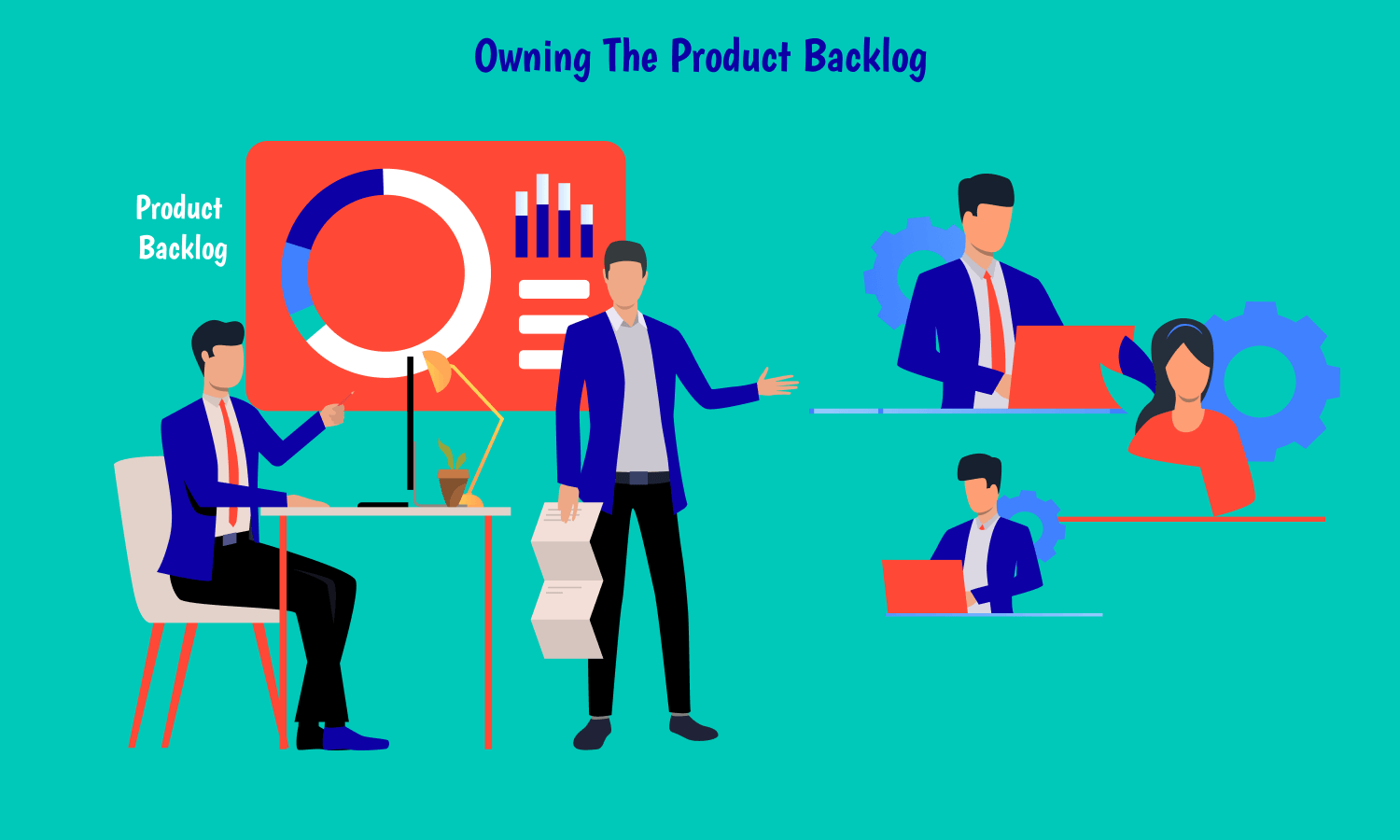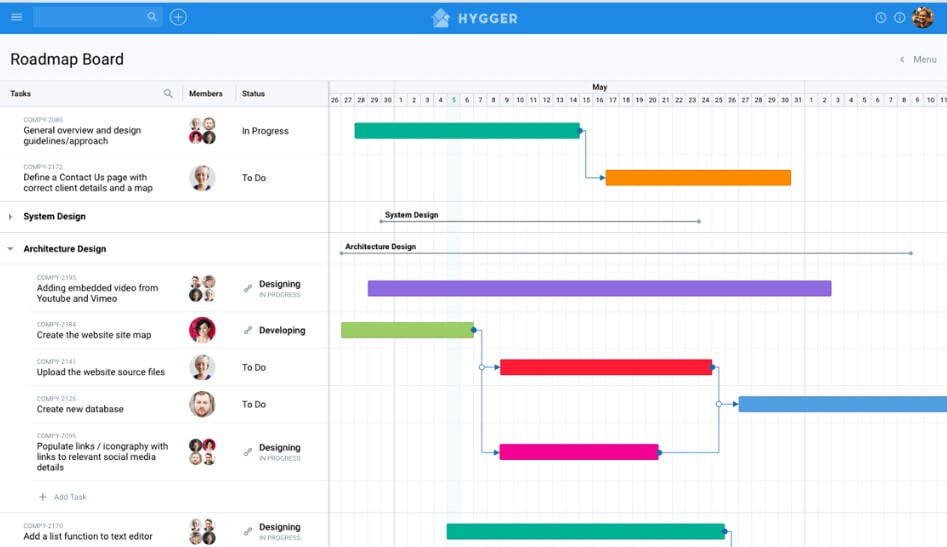Product Backlog
What is the product backlog and how to optimize it?
Browse topics
More and more software development companies use Scrum management methodology nowadays letting their teams split the work scope into two-week sprints and continually develop a product instead of releasing whole deliverables at once.
As in any project management methodology, the organization of the processes is key. A Scrum product backlog is an essential tool that helps to deal with that.

A well-prioritized product backlog not only makes release and iteration planning easier. It also broadcasts all the things your team intends to spend time on. In addition, stakeholders and teams can balance their expectations.
So, what is a product backlog in Agile development?
In this post, we describe why the Agile product backlog is important, how to develop and refine it, and how this list of items plays into Sprint Planning.
What Is a Product Backlog in Scrum?
A product backlog is an emergent, ordered list of what is needed to improve the product. This is the only source of work undertaken by the Scrum team. The most important items are shown at the top of the backlog, giving the team the idea of what to deliver first.
The development team pulls work from the product backlog in line with the team’s capacity, by iteration (Scrum) or continually (Kanban).
Product backlog items that can be done by the Scrum team within sprints are usually selected during Sprint Planning meetings.
Also Known As…
- Portfolio backlog. It contains various initiatives that a company is considering (epics).
- Solution backlog. It contains the high-level items that represent aspects of a solution (capabilities and enablers).
- Program backlog. It contains the items that represent aspects of a solution (features).
- Team backlog. It contains the items that a team works on (user stories).
Product Backlog: What Can It Include?
The logical question is what does the product backlog contain? There is no 100% right answer as the contents of the backlog vary greatly from team to team.
In fact, the Agile product backlog acts as a list of all projects and initiatives related to a particular product. If an initiative is not included in the backlog, it will most likely get lost and forgotten.
In most cases, the backlog includes the following items:
- New features
- Changes to existing functionalities
- Bug fixes
- Infrastructure updates
- Technical debt
Usually, product managers break down items into user stories. However, every team has its own way of structuring the contents of its backlog.
Who Is Responsible for Managing the Backlog?
Who owns the product backlog?
The Product Owner (PO) owns the backlog, although the entire cross-functional Scrum team works together on it.
In most cases, the PO holds responsibility for organizing and maintaining the product backlog. Sometimes it can be organized by a product manager. However, allowing different team members to contribute items to the backlog is also quite a good idea.
There may be multiple backlogs with different purposes and owners, depending on a team’s approach to Agile.

The Importance of a Product Backlog: Why Does It Matter?
A Scrum product backlog can be considered as a way of putting a brainstorm or a product plan into action.
You will definitely be approached by clients and stakeholders who have many ideas for improving your product. Not all the ideas will be valuable, but without a structured product backlog, it will be difficult to differentiate between the valuable ideas and a waste of time.
What Are the Benefits of the Product Backlog?
Here are some of the most vivid advantages:
- It is easy to compose it as an organized list.
- It can be easily prioritized.
- It allows for immediate tracking of dependencies and ordering them.
- It can be changed as priorities change.
- It allows considering a product from the long-term perspective.
In fact, a product backlog allows Scrum teams to make systematic improvements to a product over the long haul.
4 Steps to Create an Organized Product Backlog
Usually, product backlogs are presented in the form of spreadsheets. However, there’s a problem: spreadsheets don’t let you constantly move rows. Besides, the problem related to formatting issues and the ensuing migraine also exist.
To start creating your product backlog, choose an appropriate software solution such as Hygger. The platform offers reliable backlog templates as the easiest way to start building your Scrum product backlog. You can share it with stakeholders and rearrange however you’d like.
There are basic steps to start your Scrum product backlog.
1. Adding Ideas
You will probably get ideas for product improvements from stakeholders.
2. Getting Clarification
When receiving ideas from the stakeholders, make sure you understand the reason behind a particular addition, the amount of value it contributes to the product, and the specifications of the item.
3. Prioritizing
The product backlog should contain clearly defined and high-priority items at the time as well as vague items that don’t have a high priority at the bottom.
4. Making Updates
Do not forget to update the backlog regularly as it is a living document. Make sure you’re constantly refining, prioritizing, and keeping the backlog up to date.

The Role of Prioritization
It is crucial for the Product Owner to produce the very best product possible. That is why he/she strives to develop the most valuable additions to the software first. Logically, the most valuable addition would be at the very top (just because the product backlog is ranked in order of most valuable components).
- The items with the higher priority should be groomed and have great value to the product.
- The items with the mid-priority should be candidates for refinement.
- The items with the low priority can be safely ignored until they became mid-priority stuff.
As items progress closer to the top, they should be groomed so they can be better acted upon.
The Role of Backlog Grooming
The product backlog grooming process makes the tasks in the backlog clear enough to be action items instead of inexplicable ideas. There are two points of view related to product refinement:
- Some teams groom all the items in an Agile backlog.
- Others prefer to refine as you go. They groom mid-priority items until they can be elevated to high-priority items.
What Is the Difference Between Product Backlog and Sprint Backlog?
Sometimes people confuse a product backlog with a product roadmap. Both are living documents that serve distinct purposes for Agile teams.
The key differences are:
- The roadmap contains high-level themes while the backlog includes task-level jobs (stories).
- The roadmap’s audience includes the executive team while the backlog is an internal doc primarily for the development team.
- The product roadmap conveys the entire strategy while the backlog conveys the plan to implement it.

What Are the Expected Benefits?
All the items in the Scrum backlog serve as the means for future conversations about an option for achieving the desired outcome. It means that a Scrum team doesn’t need to have an idea fully fleshed out before adding it to the backlog.
The dynamic nature of the product backlog allows managing the team’s learning about the desired outcome and the ways to deliver it. It is not obligatory to have the backlog completed when a team starts work. The team can start with an initial idea, adding new backlog items as they learn more.
Sometimes, the team removes backlog items that they think do not contribute toward achieving the desired outcome. It helps to avoid producing extraneous outputs that do not add value.
Are There Possible Pitfalls?
The product backlog in Agile is often confused with a requirements document. Make sure you understand the key differences between them.
- Backlog items are necessary. However, they are not sufficient to describe the intended changes to the product.
- The inclusion of an item in the backlog does not guarantee that it will be delivered (in contrast to something that appears in a requirements doc).
- The backlog evolves as the understanding of the product evolves (in contrast to a requirements document that is the baseline).
A product backlog may become too large to be effectively managed. This may happen when a team adds every idea that is suggested for addressing the outcome but does not explore the ideas that won’t be delivered.
How to Keep the Product Backlog Healthy
If you think that creating a product backlog is enough, you’re mistaken. It is also important to regularly maintain it to keep pace with the program. This is the direct responsibility of the Product Owner to review the backlog before each iteration. When the product backlog gets larger, POs need to group it into near-term and long-term items.
The backlog actually serves as the connecting point between the Product Owner and the development team. The PO can re-prioritize work in the backlog at any time due to refining estimates, customer feedback, and new requirements.
However, when work is in progress, it is better to keep changes to a minimum as they disrupt the development team, affecting focus and flow.
What Are the Anti-Patterns You Should Pay Attention to?
- The PO prioritizes the backlog at the start of the project. However, he/she doesn’t adjust it as developers and stakeholders provide feedback.
- The Scrum team limits the backlog items to those that are customer-facing.
- The project backlog is kept as a doc stored locally and shared infrequently. This prevents stakeholders from getting updates.
Conclusion
Whatever the product, project, or service is being developed, backlog optimization is an integral part of the management functionality.
A Product Owner can easily switch from a routine to a backlog, due to professional backlog management tools that turn it from a routine into a pleasant process.
